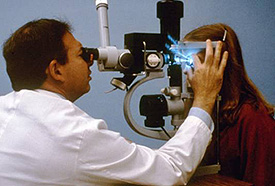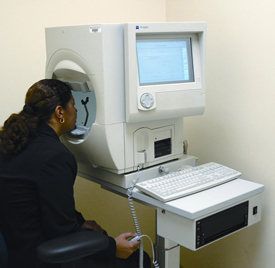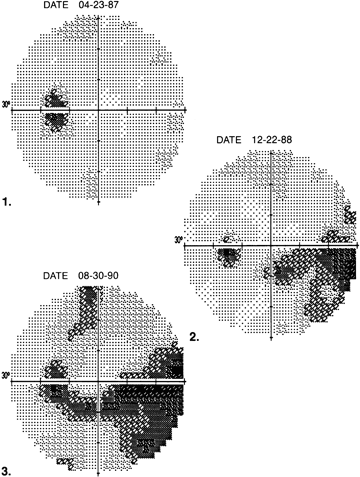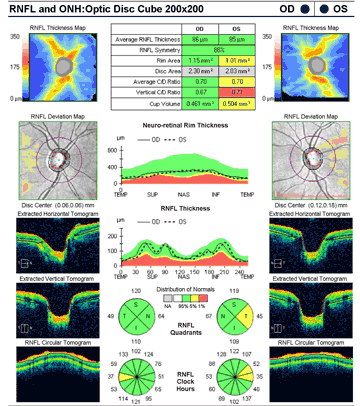Glaucoma
Glaucoma is an eye disease that can occur with little or few noticeable symptoms. It can be difficult to detect without regular, complete eye exams. This disease also occurs more frequently in family where multiple family members may be affected. What patients can notice with severe glaucoma in that the side vision is affected or limited in certain directions.

The Underlying Problem
 The underlying problem is that the pressure inside the eye is too high and it damages the weakest part of the eye which is the optic nerve. This is where all the nerve fibers in the eye come together in the eye to exit to the brain.
The underlying problem is that the pressure inside the eye is too high and it damages the weakest part of the eye which is the optic nerve. This is where all the nerve fibers in the eye come together in the eye to exit to the brain.
The damage can be seen in the eye by your eye doctor looking at the nerve to see if the normal amount of cupping in the eye is increased.
During your exam the pressure will be measured in the eye with a tonometer and a visual field test may also be performed to measure and document any damage to the visual field.
Treatment
 The basic treatment is to lower the pressure with the use of eye drops. They come in various types and may also be used in combination.
The basic treatment is to lower the pressure with the use of eye drops. They come in various types and may also be used in combination.
If the drops are unsuccessful then the use of surgical treatment in the form of a laser treatment or in the operating room may be required.

Visits and Special Testing
 Part of the initial and follow up visits require your doctor to be able to tell if you have glaucoma and whether it is progressing. This is accomplished by tests that can be performed to tell the extent of the loss of the field of vision (visual field testing) and measurement of the nerve thickness with the use of a machine called an OCT (Ocular Coherence Tomography).
Part of the initial and follow up visits require your doctor to be able to tell if you have glaucoma and whether it is progressing. This is accomplished by tests that can be performed to tell the extent of the loss of the field of vision (visual field testing) and measurement of the nerve thickness with the use of a machine called an OCT (Ocular Coherence Tomography).
These tests when performed and repeated over time, give your doctor the information needed to tell if your treatment is working or if further treatment is required.


